PPT-Anglo-Saxon Britain 450-1066 A.D.
Author : collectmcdonalds | Published Date : 2020-08-27
In 410 AD Rome was sacked by Alaric and the Visigoths AngloSaxon Invasion of Britian Angles Saxons Jutes and other Germanic tribes Seafaring warriors Vengeance
Presentation Embed Code
Download Presentation
Download Presentation The PPT/PDF document "Anglo-Saxon Britain 450-1066 A.D." is the property of its rightful owner. Permission is granted to download and print the materials on this website for personal, non-commercial use only, and to display it on your personal computer provided you do not modify the materials and that you retain all copyright notices contained in the materials. By downloading content from our website, you accept the terms of this agreement.
Anglo-Saxon Britain 450-1066 A.D.: Transcript
In 410 AD Rome was sacked by Alaric and the Visigoths AngloSaxon Invasion of Britian Angles Saxons Jutes and other Germanic tribes Seafaring warriors Vengeance and Bloodshed AngloSaxon Settlement . Introduction to the Literary Period. Fast Facts. Key Concept: The Anglo-Saxon Legacy. Key Concept: The Normans Invade Britain. Key Concept: Life in Medieval Society. Your Turn. Feature Menu. Historical Highlights. Lyrics, and Epics. Anglo-Saxon Elegies. ELEGY . a poem mourning the loss of someone or something such as the passing of life, a way of life, beauty, or anything of intrinsic. or spiritual value. Anglo-Saxon Lyrics. Period from the end of Roman occupation in the 5. th. century until the Norman conquest of England in 1066 by William the Conqueror.. The term “Anglo-Saxon” refers to people from Northern Germany and Denmark who raided Britain and set up new kingdoms.. . Anglo-Saxon Literature. Anglo-Saxons created their oral literature using certain conventions. Let’s examine those characteristics for ourselves. . The first characteristic that the reader can recognize is the four major beats per line.. A Prelude to Beowulf. The Anglo Saxon period is the oldest known period of time that had a complex culture with stable government, art, and a fairly large amount of literature.. Many people believe that the culture then was extremely unsophisticated, but it was actually extremely advanced for the time.. Life, Religion, and History. They were German settlers from . Angeln. and Saxony. They arrived around 410 AD…after the fall of the Roman Empire.. The Jutes and the Frisians from Denmark also settled the British Isles at this time.. Period from the end of Roman occupation in the 5. th. century until the Norman conquest of England in 1066 by William the Conqueror.. The term “Anglo-Saxon” refers to people from Northern Germany and Denmark who raided Britain and set up new kingdoms.. 449-1066 A. D. . Label the numbered sections on the map of Great Britain.. 1.. 2.. 3.. 4.. 5.. Scotland. Northern Ireland. Ireland. Wales. England. Anglo-Saxons. English traditions and language owe something to each of the island’s invaders.. --J.R. Lander. English 12 - Lomauro. The Anglo-Saxons. 449-1066. The Anglo-Saxons 449-1066. England – relatively small island of Great Britain that has been invaded and settled many times. First by Iberians. Historical Context. Anglo- Saxon migration. Unit 1: The Anglo-Saxon and Medieval periods. Historical context. Historical context. Unit 1: The Anglo-Saxon and Medieval periods. Cultural Influences. Cultural Influences. Hannah Brezovec . Melissa Dureiko. Cecily Peevler. Anglo-Saxon Religion. The Celts were a group of people who occupied the British Isles to Galatia. They seemed to have a form of animism. Their gods and spirits controlled every aspect of existence and had to be satisfied constantly. . Epic. A long narrative poem on a serious subject . Written in a grand or elevated style (formal diction, descriptive language). Centered on a larger-than-life, epic . HERO. Epic Conventions. Themes: the fate of a nation or people; loyalty among hierarchies. Anglo-Saxon Literature Lyric Poetry Jennifer Bennett, Sanderson High School, Raleigh, NC Narrative poem Tells a complete story Example: Heroic epic (Beowulf) Lyric poem Expresses the observations and feelings of a single speaker Oracle Planning and Collaboration Cloud 2022 Implementation Professional (1Z0-1066-22) preparation guide helps you to get focused on the exam. This guide also helps you to be on the 1Z0-1066-22 exam track to get certified with a good score in the final exam.
Download Document
Here is the link to download the presentation.
"Anglo-Saxon Britain 450-1066 A.D."The content belongs to its owner. You may download and print it for personal use, without modification, and keep all copyright notices. By downloading, you agree to these terms.
Related Documents

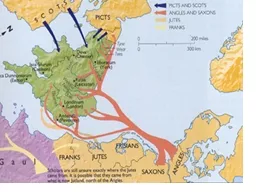




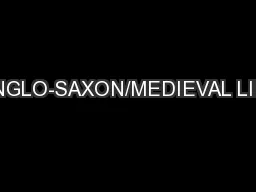
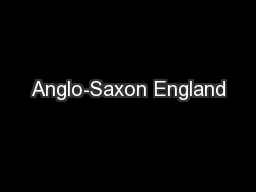
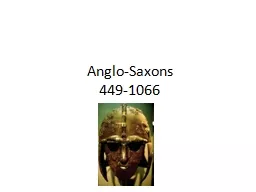
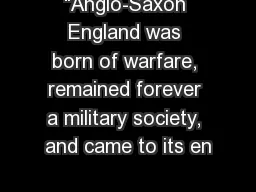
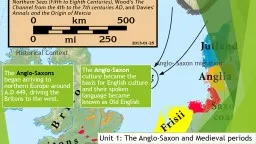



![Oracle 1Z0-1066-22 Certification Exam Syllabus and Sample Questions [2023]](https://thumbs.docslides.com/968965/oracle-1z0-1066-22-certification-exam-syllabus-and-sample-questions-2023.jpg)